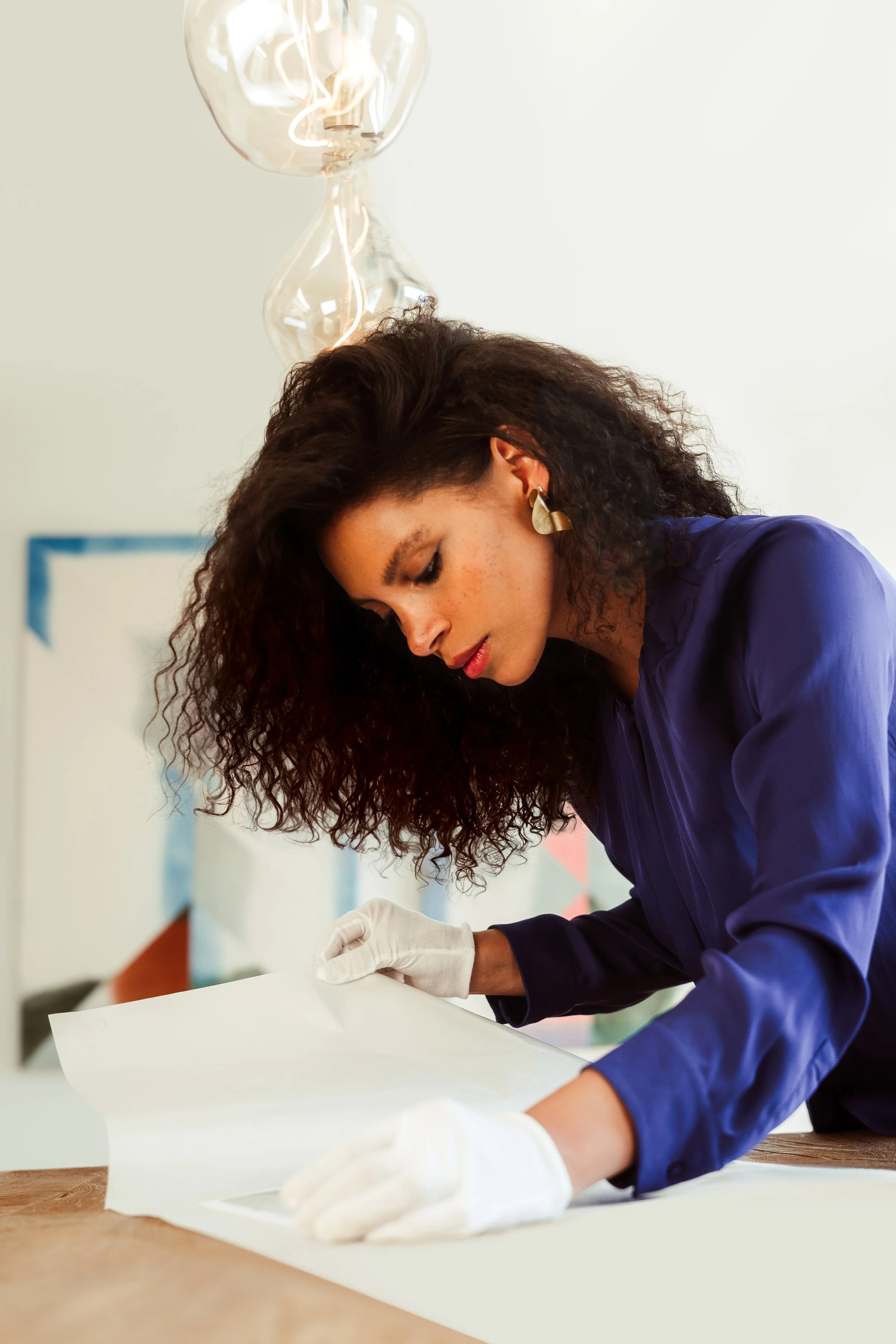The Importance of Preventative Conservation
Preventative conservation preserves the structural integrity, aesthetic qualities and value of artworks. By carefully controlling environmental factors such as humidity, temperature and light exposure, conservators can mitigate the most common causes of deterioration. Each medium has unique sensitivities, requiring tailored conservation strategies. Proper storage, handling, and installation practices also play critical roles in maintaining the longevity of paintings, works on paper, and photographs. This article explores a few key considerations and best practices to prevent potentially irreversible damage and degradation.
Humidity
Humidity control is a critical factor in preserving artworks. Fluctuations in relative humidity (RH) can cause materials to expand and contract, leading to warping, cracking, and in extreme cases, mold growth.
• Oil and acrylic paintings on canvas are highly sensitive to changes in RH. High humidity can weaken the canvas fibers, causing sagging or even mold growth on organic materials like the wooden stretcher bars. Low humidity, on the other hand, can lead to paint layers becoming brittle, resulting in cracks.
• Works on paper, such as prints and drawings, are exceptionally vulnerable to humidity. High humidity levels encourage mold growth, which can stain the paper and cause irreparable damage. Low humidity can cause paper to become brittle, especially if it is already acidic due to age or poor-quality materials.
• Photographic materials, including film and prints, are similarly vulnerable. High humidity can lead to emulsion softening and adhesion, resulting in image loss and sticking. Photographs stored in humid conditions may also experience color fading or silver mirroring (a phenomenon where silver particles migrate to the surface, creating a reflective sheen).
To protect artworks, a consistent RH level of 40-60% is recommended for most items. Storing artworks in climate-controlled environments or using desiccants and humidifiers in storage cases can help maintain stable humidity levels.
Temperature
Temperature fluctuations, much like humidity, can cause materials to expand and contract, leading to physical stress on the artwork. High temperatures accelerate chemical reactions that cause degradation, while extremely low temperatures can make materials brittle. Ideal temperatures for storing and displaying most artworks are generally between 18-22°C (64-72°F).
• Paintings, especially those with organic binders, can experience accelerated yellowing and cracking when exposed to higher temperatures over time.
• Paper and ink deteriorate faster at high temperatures, causing fading, yellowing, and loss of structural integrity. Fragile or historic paper documents are often stored at slightly lower temperatures, around 15°C (59°F), to slow these processes.
• Colour and black-and-white photographs benefit from cooler storage temperatures, ideally around 2-5°C (35-41°F), especially if they are being stored long-term. Special refrigeration units are often used to prolong the life of photographic materials.
Light exposure
Light is another factor that can irreversibly alter an artwork’s appearance. Ultraviolet (UV) light, in particular, is harmful because it causes fading and discolouration in pigments, paper, and other organic materials.
• Prolonged exposure to light can fade colours in paintings, especially those containing light-sensitive pigments. Additionally, UV radiation can weaken canvas and linen fibres, causing paintings to deteriorate over time.
• Works on paper are highly susceptible to fading and discolouration when exposed to light. Inks, dyes, and pigments can fade rapidly, and the paper itself may turn yellow or brown when exposed to UV radiation.
• Photographic materials, particularly colour prints, are vulnerable to light exposure. Prolonged light exposure can cause fading, color shifts, and a loss of detail in both black-and-white and colour photographs. It’s crucial to limit light exposure by displaying photographs for only short periods and storing them in the dark when not on display.
To protect artworks from light damage, UV-filtering glass or acrylic in display cases and frames can help reduce light levels, and keeping sensitive items in low-light or dark environments. LED lighting is preferred because it produces minimal heat and lacks UV emissions.
Storage
Proper handling and storage of artworks are essential components of preventative conservation. Special storage areas are typically climate-controlled to maintain consistent temperature and humidity levels. For paintings, padded storage racks with spaces between each piece prevent abrasions and accidental damage. Works on paper and photographs are best stored in acid-free folders or boxes to prevent exposure to pollutants and dust.
Photographs and delicate works on paper should be stored in dark, flat enclosures that limit exposure to light and airborne pollutants. To prevent potential insect damage, artworks are often checked regularly and, in some cases, stored with pest-resistant materials.
Handling Protocols
Minimizing direct handling of artworks reduces the risk of damage from accidental impacts, fingerprints, or contamination. Using gloves, handling tools, and protective sleeves are standard practices in professional conservation to prevent contact with oils and dirt that could degrade the artwork’s surface.
Installation
• Frames and Mounts: When framing artworks, acid-free matting materials and UV-protective glazing are used to prevent acidic damage and light exposure. Conservation-grade frames and mounts support the artwork without stressing it, especially important for paper-based works.
• Vibration and Security: Displaying art in locations with minimal vibration is essential. Vibrations from nearby equipment or heavy foot traffic can destabilize paintings, especially if they are mounted on fragile stretchers. Additionally, artwork should be securely mounted or displayed in cases to prevent accidental falls or theft.

